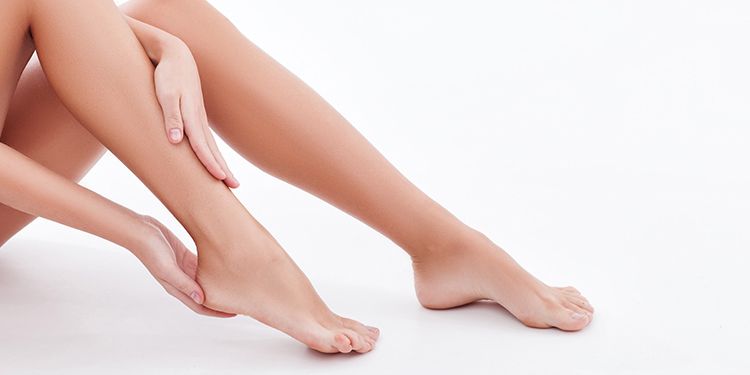Revealing the Intricacies of Excessive Sweating: A Comprehensive Guide to Medical Diagnosis and Administration
Extreme sweating, medically called hyperhidrosis, is a condition that influences a significant number of individuals and can have a profound influence on their lifestyle. While sweating is a natural bodily function, its overactivity in hyperhidrosis presents a special set of challenges that commonly go beyond plain discomfort. Recognizing the underlying reasons, recognizing the signs and symptoms, and navigating the analysis process for hyperhidrosis can be detailed jobs. In this extensive guide, we will certainly check out the intricacies of hyperhidrosis, from its diagnosis to the variety of therapy alternatives offered, clarifying effective management approaches for those coming to grips with this problem.

Comprehending Hyperhidrosis Causes
Hyperhidrosis causes can be credited to numerous elements such as genetics, hormonal imbalances, and specific clinical problems. Genes play a significant duty in main focal hyperhidrosis, where individuals acquire the problem from their household participants. This kind of hyperhidrosis often materializes in certain locations like the palms, soles of the feet, underarms, and face. Hormonal discrepancies, particularly an overactive thyroid gland or menopausal modifications, can also trigger excessive sweating. Additionally, particular clinical conditions such as diabetic issues, cardiovascular disease, and infections can result in secondary generalized hyperhidrosis. These underlying health and wellness problems can disrupt the body's natural cooling system, causing the sweat glands to come to be over active. Comprehending the origin of hyperhidrosis is critical in identifying and effectively managing this problem. By determining the details aspects contributing to excessive sweating, doctor can customize treatment plans to address the underlying cause, providing relief and improving the lifestyle for people impacted by hyperhidrosis.
Identifying Hyperhidrosis Effects

In addition, hyperhidrosis signs and symptoms may materialize in psychological and social distress, as individuals may really feel ashamed or anxious concerning their sweating, leading to avoidance of social situations (Treatment for hyperhydrosis of hands and feet). Furthermore, duplicated episodes of extreme sweating can cause skin maceration, fungal infections, and a general decrease in self-worth
Diagnostic Process for Hyperhidrosis
Launching the diagnostic procedure for excessive sweating entails extensive evaluation of the individual's case history and checkup. Asking about the beginning, period, and sets off of sweating episodes is crucial to separate between primary focal hyperhidrosis and secondary generalized hyperhidrosis. Case history ought to also include concerns about medications, medical problems, and household background of hyperhidrosis.
Throughout the physical assessment, certain focus is paid to the areas affected by sweating. The health care provider might examine the extent of sweating, look for signs of underlying problems, and assess the impact of sweating on the person's lifestyle. Additionally, specific tests like the gravimetric examination, starch-iodine test, or skin conductance dimensions might be conducted to quantify the quantity of sweat generated.
Furthermore, in instances where second hyperhidrosis is presumed, added examinations such as blood examinations, pee examinations, and imaging research studies might be advised to identify the underlying reason for extreme sweating. The diagnostic process intends to properly figure out the type and source of hyperhidrosis to guide suitable management strategies.
Therapy Options for Hyperhidrosis
When addressing extreme sweating, numerous treatment options are readily available to relieve signs and boost the individual's lifestyle. The treatment strategy for hyperhidrosis relies on the severity of symptoms and the patient's reaction to preliminary treatments.
Topical therapies, such as aluminum-based antiperspirants, are usually advised as the initial line of defense for managing light situations of hyperhidrosis. For individuals with much more severe signs, oral drugs like anticholinergics might be suggested to assist reduce sweating.
Effective Monitoring Approaches
To effectively manage hyperhidrosis, a individualized and extensive therapy strategy tailored to the individual's specific demands and response to previous treatments is important. Iontophoresis, entailing the use of a low electrical present to minimize sweat gland task, can be beneficial for both palmoplantar and axillary hyperhidrosis. A multidisciplinary approach including here are the findings dermatologists, key care medical professionals, and, if needed, doctors, can optimize the management of hyperhidrosis.
Conclusion
Finally, hyperhidrosis is a condition defined by too much sweating, which can significantly influence a person's high quality of life. By understanding the reasons, identifying the symptoms, and undergoing the analysis process, doctor can efficiently manage this condition. Treatment alternatives consist of topical medications, oral medications, injections, and also procedures in serious situations. With correct diagnosis and monitoring techniques, individuals experiencing from hyperhidrosis can find alleviation and boost their overall wellness.
Too much sweating, medically known as hyperhidrosis, is a condition that affects a significant number of people and can have a profound impact on their high quality of life. By determining the specific aspects contributing to too much sweating, medical care service providers can tailor treatment plans to resolve the underlying cause, supplying relief and boosting the high quality of life for people affected by hyperhidrosis.
Hyperhidrosis, characterized by extreme sweating beyond what is needed for managing body temperature, can significantly affect Learn More an individual's top quality of life. Making inquiries concerning the onset, period, and triggers of sweating episodes is important to separate click over here now between primary focal hyperhidrosis and second generalized hyperhidrosis. How to stop sweaty hands.In conclusion, hyperhidrosis is a problem characterized by extreme sweating, which can significantly impact an individual's quality of life